Have a question that you would like answered? Call us at 1.800.620.4840.
Types of Pallets
What is a nestable pallet?
A picture is worth a thousand words so:
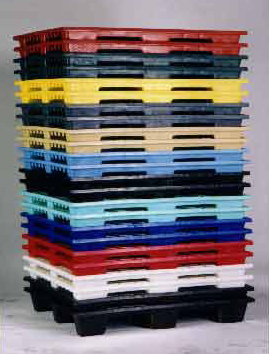 Here is a picture of pallets that fit nicely together when not in use. Similar to Styrofoam coffee cups, these pallets save space when not loaded with product (or coffee!)
Here is a picture of pallets that fit nicely together when not in use. Similar to Styrofoam coffee cups, these pallets save space when not loaded with product (or coffee!)
Most often plastic pallets from one manufacturer will not “nest” with pallets from another manufacturer. There are occasions when manufacturers work together to provide pallets that meet an industry standard, such as the Grocery Manufacturers Association (GMA). These pallets will all nest together.
What is a stackable pallet?
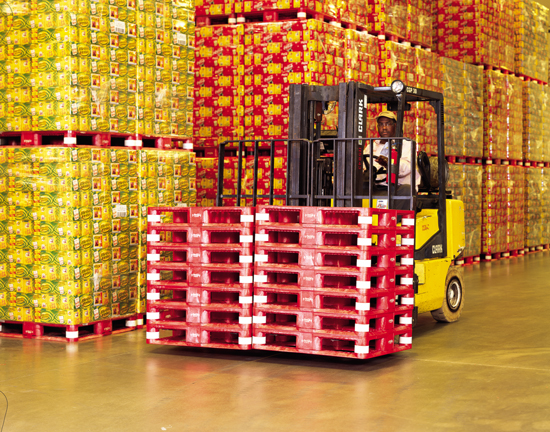 Stackable pallets have bottom support so as to be able to be placed on top of another loaded pallet and provide stability during storage and transport.
Stackable pallets have bottom support so as to be able to be placed on top of another loaded pallet and provide stability during storage and transport.
See how precise these stacks of product are? They are kept stable by using a stackable pallet and also by being loaded correctly. Stackable pallets can have runners on the bottom, perimeter frames, picture frame bottoms and more.

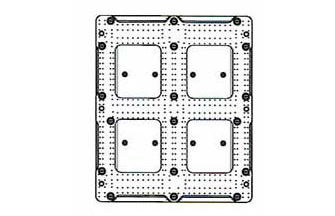
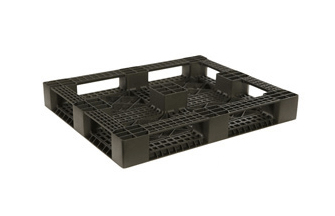
What is a rackable pallet?
A rackable pallet is engineered to be able to hold a specified amount of weight in an open span racking system. Shown below, an open span rack has a front bar and a back bar and nothing in between. Rackable pallets may also be used in an edge rack where the pallet is supported by both side edges.
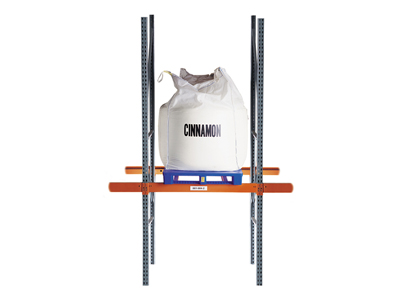
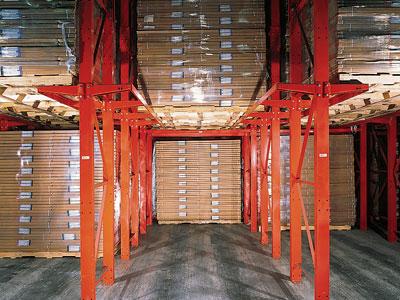
What is an export pallet?
Any plastic pallet can be used as an export pallet, but most companies will choose the least costly pallet that will safely hold their shipment. When considering an export pallet, it is wise to consider the cost of product that is placed on the pallet. A $ 50,000 shipment sent on a $9.00 inadequate pallet is not best the way to save a few pennies.
If plastic pallets cost more than wood pallets, why should I use plastic pallets when exporting? Plastic pallets do not require heat treating, time limiting stamping and the need to fill out customs papers verifying that the wood pallets conform to overseas shipping regulations. Once you figure in the time expended by your personnel regarding using wood pallets, the true cost of the wood pallet can then be compared to plastic pallets. Questions and answers concerning the use of wood materials in export shipping can be found here: www.aphis.usda.gov.
What is a custom made pallet?
As you wander throughout the internet looking for the size pallet you need, you may find that certain sizes are more common than others. If your shipment requires a size that you cannot find, a custom made pallet may be for you. Our custom made pallets do not require a mold to be made and can be configured to your specific requirements. We can make light weight small and large pallets and also heavier duty pallets and skids that can last for years. There are no minimum requirements as to quantity for an order.
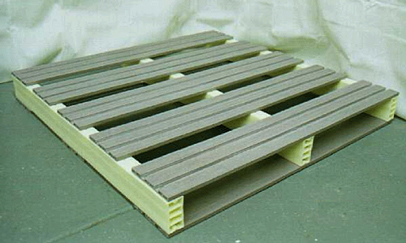
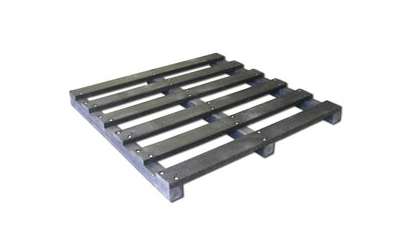
General Questions
Why do pallet prices fluctuate?
The resin used to manufacture plastic pallets is an oil based product. As the price of oil goes up and down (mostly up) so does the price of plastic pallets.
Why all the black pallets?
A good number of black or greyish black pallets contain some percentage of recycled material. Some plastic pallets are 100% recycled materials. Some pallets have no recycled material but are still black.
How come pallets, other than black, are so expensive?
When you were a kid, if you melted all of your crayons together, you would probably end up with black. To get a color other than black, virgin resin is needed. So if you want red, the brand new red resin needs to be purchased. Same with blue, yellow, green and other colors. Since a manufacturer probably does not stock blue, yellow and other colors in the same quantities as black, there is a premium for the price of the resin. Also, it is very likely that recycled materials are not used to produce blue, yellow, green and other colors, which also makes the cost higher.
How come I can’t buy pallets right from your website?
We firmly believe that customer safety is of utmost importance. We insist on talking to each customer or potential customer to ensure that the correct pallet will be used for the project at hand.
Can I stop by and purchase a couple of pallets?
Yes, but please call us first so we know you are coming.
What are your shipping hours?
Shipping is open from 9AM to 12PM and 1PM to 4:30PM Monday through Thursday. Shipping closes at 4PM on Fridays.
Can I use my own trucking company?
Certainly! If you already have an established relationship with a company, by all means take advantage of your discounts.
Do you sell used pallets?
We do not sell used pallets.
Do you sell wood pallets?
Yes
What is dynamic load?
The dynamic load of a pallet is how much weight you can place onto the pallet and still move it with a fork truck or pallet jack without damaging the pallet.
What is static load?
The static load of a pallet is how much weight you can place onto the pallet without it being moved. As this is confusing, here is an example. A pallet has a static load rating of 20,000 lbs. You will place the pallet on the floor and be able to load up to 20,000 lbs of whatever onto the pallet without damaging the pallet. The pallet never moves. If you need to move that pallet, you will need to remove weight until you get to the dynamic capacity of that pallet. This also holds true when stacking pallets one on top of another. For example, you can stack 4 pallets that have 5,000 lb on them and that would equal your 20,000 lbs static capacity.
How do I know what pallet is right for me?
Great question! Believe it or not, there is an extensive amount of knowledge tied to the use of plastic pallets. What size? How much weight does it need to hold? What are you using the pallet for? How are you moving the pallet? And many many more questions. By talking with you, we can narrow down what pallet is right for you and how you will be using it.
Legal Stuff
Ultimately the choice is yours of which pallet you purchase. We will guide you based on the information that you give us but due to the endless variety of possible uses for these items, customers should carefully consider the fitness and application performance for each intended use. This includes load factors, equipment compatibility and the like. The customer is solely responsible for such and assumes all risks in connection with determination and use.

